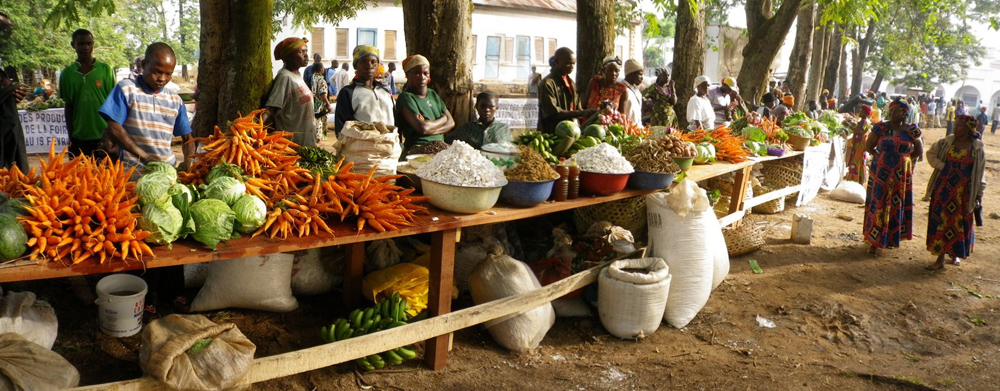
Customs and Cuisine of Uganda
By Linda McElroy, curator
Ugandan cuisine is quite the melting pot, taking culinary influences from the Arabs and British, and especially from India. The food is not typically spicy, but seasoned with tomatoes and onions to create flavorful, pleasing dishes. The diet is based on a combination of a starch and a “sauce” at each meal. The starch may consist of Ugali (a type of cornmeal paste) or Matooke (mashed plantain), and is always topped with a sauce or stew made of groundnuts (peanuts), vegetables, or meat.
Although Uganda is home to the largest fresh water lake in the world the lake has been over- fished, and fresh fish is very hard to obtain unless you live near the source. But smoked fish can be found quite readily and is often added to a dish containing meat or beans to add complexity and depth.
Other commonly found foods include bananas, pineapple, beans, cassava, sweet potatoes, cabbage, and spinach. Groundnuts are a vital staple, and are most often turned into a sauce. Rice is expensive and not typically consumed.
Most people who live outside urban centers produce their own food and generally eat two meals a day – lunch and supper. Breakfast is often a cup of tea or porridge.
Indian samosas (triangular, fried pastries stuffed with spiced vegetables or meat) have been completely assimilated into the local cuisine, and in the larger cities you will find vendors selling these snacks by the roadside, as well as the more regional snack of fried grasshoppers!
Tea (chai) and coffee (kawa) are popular beverages. Alcoholic beverages are enjoyed as well, with the majority of wine coming from South Africa. The national drink is waragi, a banana gin.
Dining Etiquette:
- Shaking hands is the normal form of greeting. Casual dress is considered appropriate in the daytime and evening.
- Etiquette is important at family meals. When a meal is ready, all the members of the household wash their hands and sit on floor mats.
- Visitors and neighbors who drop in are expected to join the family at a meal.
- Normally a short prayer is said before the family starts eating.
- Leaning on the left hand or stretching one’s legs at a meal is a sign of disrespect.
- When the meal is finished, everyone in turn gives a compliment to the mother.
Sources:
Photo credit: Erin Bourgols – originally posted to Flickr, titled Uganda 039. Used under Creative Commons Attribution Noncommercial No Derivs- 2.0 Generic.
View Recipes from Uganda
Uganda
